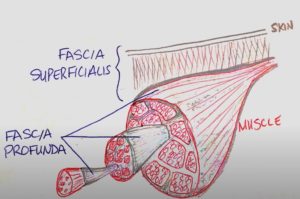restore: the legs program
caring for the calf muscles and lower leg
Soft Tissue Care:
In this area, you’ll find some handy information on how best to care for the soft tissue in your (lower) legs.
My experience tells me that any athlete regardless of age or experience, will benefit from some regular tissue mobilization and self-massage of the legs.
Before we get into the nitty-gritty of SMR for the legs though – I have to ask the question:
Are you IN LOVE with your foam roller?
Because there’s no doubt about it – the average runner or triathlete loves their foam roller (or pick your tool…there’s plenty of variations in today’s marketplace)! For many, it’s just about the most important training and recovery tool we have. Even more, we seem to love the feeling (of pain!) as we hammer on our quads, IT band, and calves, don’t we?
The more it hurts, the better we think it is for us…and the more we think we need to do it, right?
What are we missing?
 Certainly, among the experts, the jury is out on what’s actually happening to our body when we foam roll or use some other similar tool, AND whether or not there’s a real change in the tissue that helps us long term.
Certainly, among the experts, the jury is out on what’s actually happening to our body when we foam roll or use some other similar tool, AND whether or not there’s a real change in the tissue that helps us long term.
In fact, according to this expert in this video presentation, we aren’t doing Self Myofascial Release at all, at least in the way many of us have believed.
I happen to agree with him.
I’m certainly NOT here to say that foam rolling is a waste of time or that it’s bad for you. For many athletes out there, they believe that the time they spend rolling and doing other soft tissue manipulation IS valuable and feels good, and isn’t that what matters? All I am saying is, we’ve got lots more to learn about the topic.
And on that topic of more to learn, here’s a few things I’ve learned through my work as a Fascial Stretch Therapist:
- The older and thicker the bound up, gummed up, stuck “fybrotic” tissue/fascia is, the harder it’s going to be to change it for the better.
- Any kind of “release” of fascia, if it’s going to be effective, has to involve movement, and I’m not talking about you moving your body over a roller, I’m talking about movement that involves changing the length of tissue.
- When you press on (read: roll-on, lean on, or “smash”) damaged tissue, you’re firing pain nociceptors and potentially reducing the chance for improvement. The feeling, even if it does lift your pain threshold somewhat (a positive training effect?), may be exactly what you don’t want if it’s “release” you’re seeking. There’s definitely a reason for the “no pain” policy when I’m working with someone doing Fascial Stretch Therapy.
- Any kind of soft tissue work including stretching needs to be done consistently and progressively in order to be beneficial. An every-so-often approach isn’t likely to produce long term, positive change.
- To follow on the previous bullet point, in order for any kind of stretching to “take hold” and enhance movement quality long term, it’s got to be locked into place with some kind of stability movement shortly thereafter. Gotta “groove the groove!” 🙂
- Joint mobility is one thing – tissue health, elasticity, and freedom of motion, is another. We need BOTH to stay injury free AND to go fast!
- When it comes to staying young, feeling good, and going fast (especially as we age), staying appropriately hydrated is so so important! Check out THIS VIDEO of fascia magnified 25x, to see just how much water moves through those fascial tubules. (Do you see the impact of becoming dehydrated on the race course, and how much that might lead to you to having to “muscle it” to prevent you slowing down?)
If you’d like to PRINT a PDF of the written information on this page, you may do that by CLICKING HERE!

RAD makes the BEST mobility tools available. Click on the link below to get shopping right now! You won’t be sorry.
To summarize, none of the above is to say that foam rolling or any other kind of SMR using any of the other tools you have access to, can’t be helpful.
IT CAN. And it will if you use the tools appropriately and consistently, especially if your training regimen includes lots of very intense, stressful workouts that can damage tissue appropriately!
*That’s one reason WHY you will find numerous references to SMR throughout this and every other course here on this website.
What it IS SAYING, is that no kind of SMR can take the place of smart well-conceived training, that addresses joint function first, and then pattern training second.
The best way to avoid feeling like you NEED to do more SMR, is to do the kind of training that more naturally leads to healthier, more vibrant, elastic soft tissue.
Of course, that kind of training is what is contained in THIS course!
It’s also smart to make sure you that if you’re a runner, that you progress your training in a smart way and most importantly, that you get appropriate recovery.
Make sure to CLICK HERE to visit the Rad Roller website to grab what are absolutely the BEST self-myofascial release tools available!
“Your next training session will only be as good as your latest recovery.”
-Coach Al
